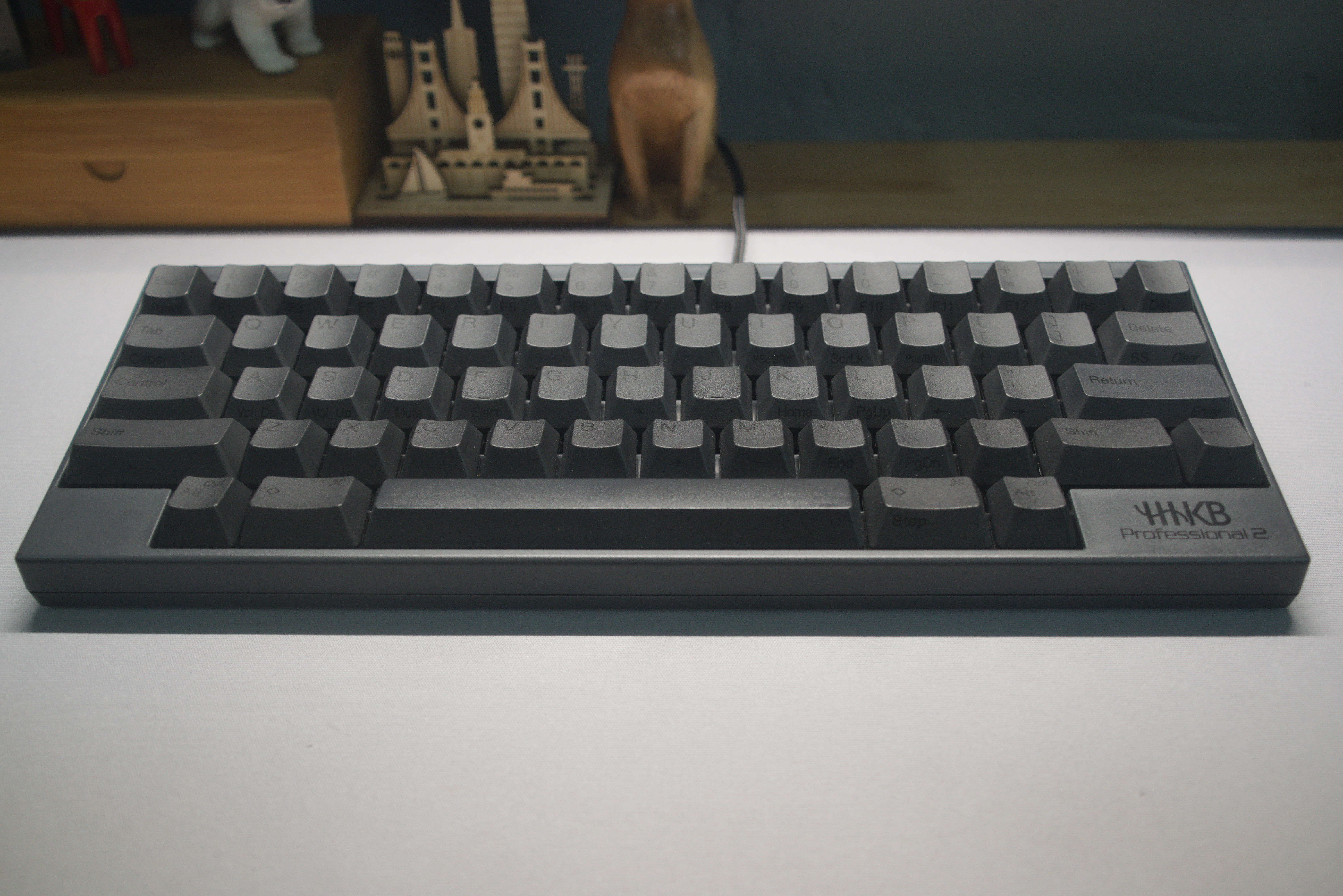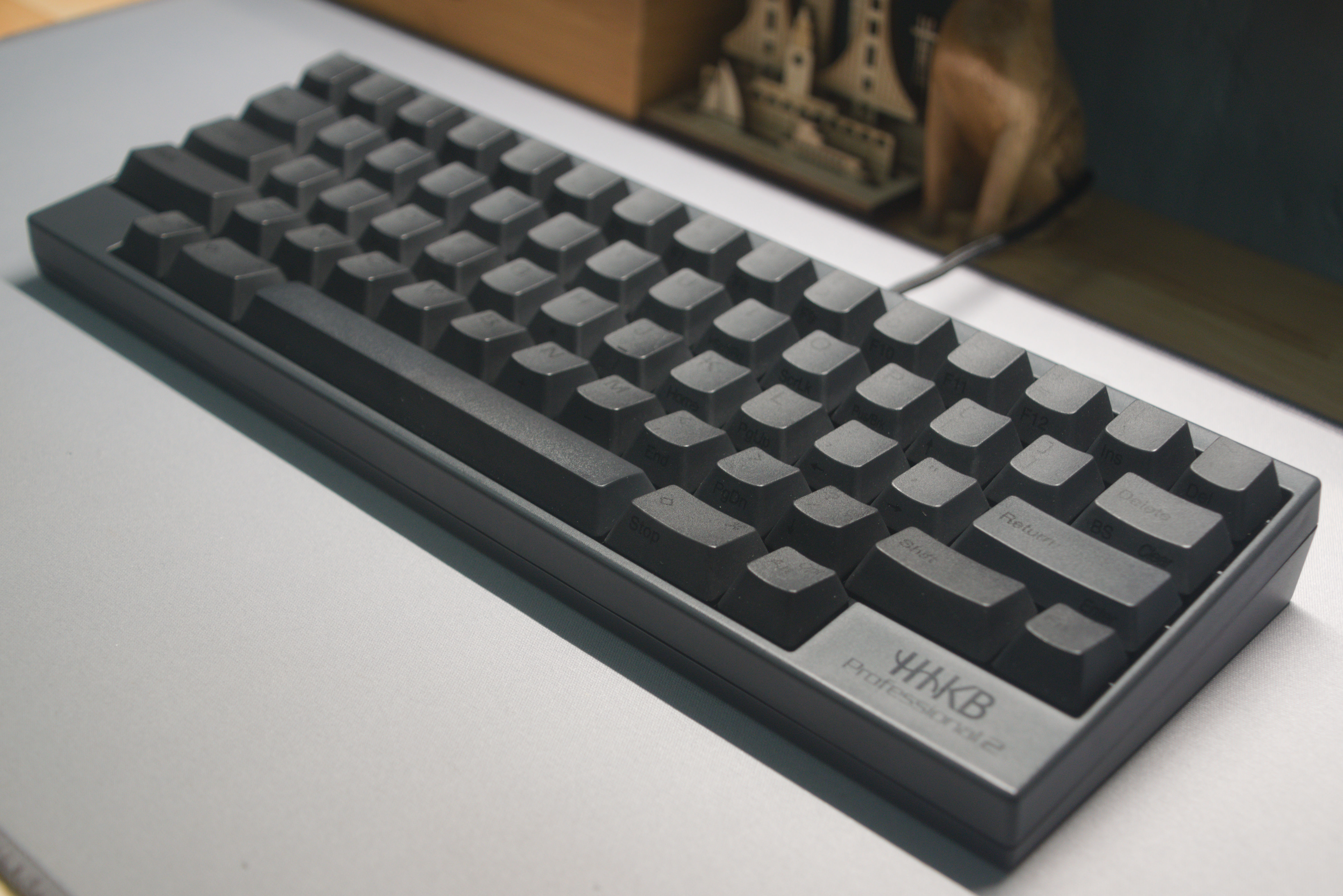Since 2021, I have had an on-and-off interest with mechanical keyboards. I'd seen videos of these people with these awesome sounding, beautiful, and unique keyboards and I wanted to try building one myself. I asked for, and got the money to build one for Christmas that year. After some research, the first keyboard I ever built was the original Idobao ID80. In 2021, that was one of the nicer budget keyboards you could get and I really loved it (and still do!).
Since then, I've gone through a few more keyboards, some notable ones being:
Moving on to what the title is about. Earlier this year, I purchased a 16 year old keyboard on eBay from Japan and it has kind of killed any interest I had in the hobby.


This is the HHKB Pro 2, a keyboard made by PFU which was first released in 2006 and is the longest running edition of the HHKB. There's a few things that make this keyboard so much nicer than my others and I like it so much that I think it might have finally broken my cycle of buying new keyboards.
The first thing I will mention is the unconventional layout. There are a few changes from the standard US/ANSI 60% layout, one of which will be immediately obvious if you look at the pictures. The left control key is in place of the caps lock and the right control key is absent. Something you may not have noticed is in the top right: The backspace key is right above the enter key. This puts the backspace where it can be reached without taking your fingers away from the home row. The F1-F12 keys, arrow cluster, and many others are on the second keymap layer which is accessible via the function key in the bottom right. For me, this layout is more ergonomic than a standard layout, as having these keys closer together reduces how much I need to move my hands around.
Another awesome thing about this keyboard are the switches. Almost every single mechanical keyboard released nowadays uses Cherry MX style switches. The aforementioned Apple M0116 uses Alps SKCM switches which are pretty neat. The HHKB uses Topre switches, which are made with capacitive springs underneath rubber domes. This is different from traditional membrane keyboards, as the bottoming-out feel is not mushy but soft and because it uses capacitive springs, the key is actuated during the key press rather than at the end of it.
The keyboard doesn't require any software and just works as a standard USB device, but it is also compatible with a macOS layout via the DIP switches accessible through a panel on the back of the keyboard. I've made good use of this, as I often brought it to places with different computers. Regarding bringing it to places, it's made of plastic which makes it very light and easy to move around. The sound from this keyboard doesn't stand out nearly as much as a mechanical keyboard and is much closer to a regular membrane keyboard, meaning that it fits in perfectly well in an office setting.
None of this is to say that this keyboard is perfect though. It's certainly cool to me, and very unique, but I would say that for most people it is surprisingly mediocre and in some ways even bad. I've had to make a few modifications to this keyboard to get it to the point that I like it, and I think that most people would have to do the same. First of all, the case creaks like crazy when you press it. It's just plastic-on-plastic contact held together with screws, so pressing the case can be quite loud and it can creak from slightly hard typing. I resolved this by putting pieces of electrical tape around the areas where the bottom and top halves of the case meet and it has mostly resolved the creaking issue while typing, though it still creaks if you twist it or press down with more significant force. Along with that, the upstroke of the keys were a very loud plastic clack sound, as there was nothing to dampen them. I bought some thin foam rings to put around the sliders, took apart the keyboard and put them on every single one (pain) and that solved that issue.
Overall though I still really, really like this keyboard and especially the layout to the point where I set up any keyboard I will use for a long time to have the same or a similar layout. If it somehow broke, I would probably buy a new one because nothing can really replace it for me at this point. Maybe one day I'll get bored of it again as I have with others in the past, but I really doubt it. It's also really really expensive.